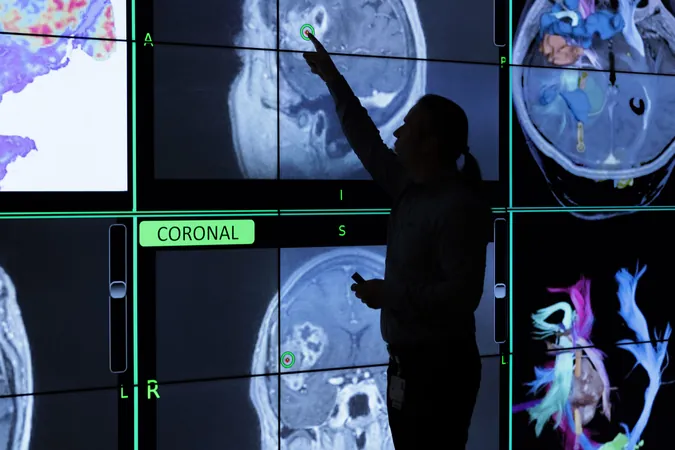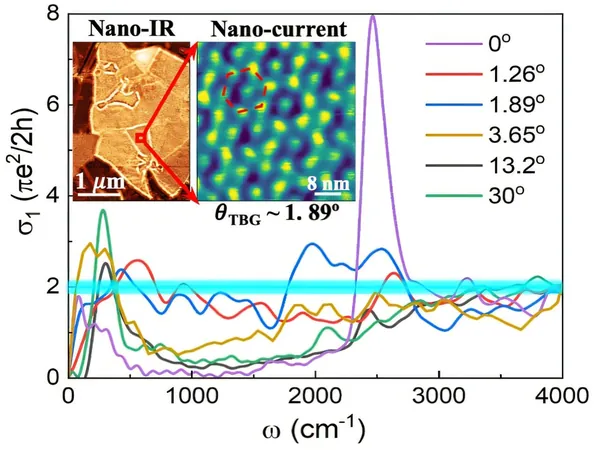
Has Climate Change Fueled the Rise of Pneumonia Cases? Insights from Medical Experts
2024-11-15
Author: Siti
Introduction
As climate change continues to reshape our environment, its repercussions on public health are becoming increasingly alarming. Health professionals are sounding the alarm about how rising temperatures and worsening air quality can exacerbate conditions like pneumonia.
The Connection: Climate Change and Pneumonia
Dr. Pralhad Prabhudesai, a pulmonary physician at Lilavati Hospital in Mumbai, emphasizes that climate-related pollution can compromise respiratory health. In areas like Northern India, especially the capital city of Delhi, severe air pollution is wreaking havoc. Factors such as stagnant cold air trapping toxins, dust, and smoke from illegal agricultural burning contribute to deteriorating air quality. Residents often find themselves grappling with respiratory challenges, with doctors advising measures like staying indoors and using masks to mitigate risk.
But what exactly is pneumonia? Dr. Prabhudesai clarifies that pneumonia is an inflammation of the lung tissue due to infections, which can be either bacterial or viral. Symptoms range from fever and chest discomfort to cough and shortness of breath. While mild cases can often be treated at home, severe instances may necessitate hospitalization and intensive medical care, highlighting the potentially fatal consequences of this condition.
Changing Patterns in Pneumonia
The landscape of pneumonia cases is evolving. Seasonal changes result in different types of pneumonia being prevalent at various times of the year. Community-acquired pneumonia (CAP) is notably concerning, as it remains a leading cause of respiratory illness, especially among vulnerable populations.
How Climate Change Boosts Pneumonia Cases
Several mechanisms link climate change to rising pneumonia rates:
1. Air Pollution: Elevated levels of particulate matter in the air weaken the immune response, enabling harmless infections to escalate into severe pneumonia. Polluted air is also a vector for transporting pathogens.
2. Environmental Factors: Events such as wildfires release harmful particulates and smoke, creating an atmosphere ripe for respiratory infections.
3. Altered Immunity: Climate change affects water quality and food resources, diminishing overall immunity and increasing the population's vulnerability to infections.
4. Pathogen Spread: Fluctuations in temperature can catalyze the spread of various pathogens, including those that cause pneumonia, leading to increased infection rates.
Effective Prevention Strategies
In light of these mounting challenges, a comprehensive approach to prevention is crucial. Here are key strategies to mitigate the risk of pneumonia:
- Combat Air Pollution: Engage in community initiatives to plant trees and promote sustainable living practices to help alleviate pollution levels.
- Vaccination Programs: Getting vaccinated against influenza is essential; ideally, annual flu shots should be administered before the monsoon season. Individuals at risk, particularly those over 50-55 years, should also receive vaccines targeting pneumococcal infections.
- Consider Additional Vaccinations: Adults with vulnerabilities should not overlook vaccines for diseases like shingles, diphtheria, and whooping cough, as these can further protect against respiratory complications.
Emphasizing Healthy Habits
Adopting a healthier lifestyle plays a vital role in strengthening immune responses. Simple modifications such as regular exercise, a balanced diet rich in fruits and vegetables, staying hydrated, and ensuring adequate sleep can help bolster overall health.
Conclusion
As we continue to grapple with the realities of climate change, awareness and proactive measures are imperative in tackling the dual threat of environmental decline and public health crises like pneumonia. Don't let rising pollution levels compromise your health—take action today!



 Brasil (PT)
Brasil (PT)
 Canada (EN)
Canada (EN)
 Chile (ES)
Chile (ES)
 España (ES)
España (ES)
 France (FR)
France (FR)
 Hong Kong (EN)
Hong Kong (EN)
 Italia (IT)
Italia (IT)
 日本 (JA)
日本 (JA)
 Magyarország (HU)
Magyarország (HU)
 Norge (NO)
Norge (NO)
 Polska (PL)
Polska (PL)
 Schweiz (DE)
Schweiz (DE)
 Singapore (EN)
Singapore (EN)
 Sverige (SV)
Sverige (SV)
 Suomi (FI)
Suomi (FI)
 Türkiye (TR)
Türkiye (TR)